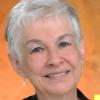 SUCH GOOD GIRLS: THE JOURNEY OF THE HOLOCAUST'S HIDDEN CHILD SURVIVORS
SUCH GOOD GIRLS: THE JOURNEY OF THE HOLOCAUST'S HIDDEN CHILD SURVIVORS
By R.D. Rosen
Published by Harper, $25.99
R.D. Rosen's compelling new book begins when Selma is 5. Soon she is given a new name, Zofia, and a new religion, Roman Catholic. One day, her mother enrolls her in a Catholic elementary school.
Every few months, mother and daughter move for their own safety -- often helped by nuns and priests. Coached by her mother, Zofia reads the catechism, studies the tenets of Roman Catholicism and receives the Eucharist. She attends Mass on Sunday, even learns the words to Latin hymns and prayers.
Once her mother listens to a talk by an itinerant priest and is so moved by his message that she asks him to hear her confession. She tells him about her daughter and about herself not being a Catholic, then worries that her confession has put their lives at even greater risk, which, given the circumstances, seems almost impossible.
After a few years, Zofia learns that she's not actually Catholic. Her mother tells her that she's a Jew. But she doesn't believe her.
Jews are dark-eyed and ugly, Zofia thinks. She is Polish with blond hair and blue eyes. There's even a photograph of her wearing a long white dress and a crown of flowers taken on the day that she received her first Communion. Zofia hates Jews and has even taught her doll and teddy bear that the Jews killed Christ and that they drink the blood of Gentile children like herself.
No, her mother repeats, she's Jewish. So how does she feel about herself, and God, and religion? Is she a good Christian child or a good Jew? How does she live the rest of her life?
In Such Good Girls, Rosen, an award-winning writer and commentator on PBS, HBO and NPR, discusses the stories of several hidden children, including a few who later became priests. There's even a cardinal -- Cardinal Jean-Marie Lustiger, friends with St. John Paul II. But Rosen focuses on three women: Selma (later changed to Zofia then to Sophie), Flora and Carla, with the emphasis on Sophie's story, partly because his chance meeting with her inspired the book.
Rosen explains that the experiences of these three hidden children -- one from Poland, one from France and one from Holland -- were typical of those of other children who believed themselves to be Christians only to learn later that they were Jewish. Some learned their true religion at war's end. Others are just learning the truth of their identities now as their elderly adoptive Christian parents make deathbed confessions.
Rosen blends the personal narratives of the women with startling statistics. "Of the 140,000 Dutch Jews at the beginning of the war, only 35,000 remained, a loss of 75 percent." Ultimately, approximately 33 percent of Jewish adults survived while only 6 to 11 percent of children did so. When World War II started in 1939, there were 1.6 million Jewish children living in Germany and in the countries surrounding it. By 1945, as the war was winding down, approximately 1.5 million of those children were dead.
One of the highlights of the book is Rosen's discussion of the 1991 First International Gathering of Children Hidden During World War II, which gave the child survivors a chance to share their stories and learn, if nothing else, that they were not alone. Rosen interviewed some of those survivors and examined their family documents, letters and other memorabilia for this book.
Most children, Rosen explains, survived by leaving their parents and going into hiding. Many were orphaned. They took on new identities and often a new religion. Many of their parents were murdered by the Germans and some by the Russians. Others were murdered by their own Polish and Ukrainian countrymen.
Many of the children came from wealthy and upper-middle-class families. Their fathers were successful businessmen. Now those children were taught anti-Semitism and were in effect poisoned against themselves.
They also suffered from exposure to the elements, wore rags, had no medical care and barely any food. They were hidden in attics and closets. They had to keep silent in order to be undetected. Besides all of these hardships, many of the children were sexually abused by their "hiding parents," those who cared for them after their own parents had been deported or murdered. As Rosen sees it, the abuse was soul-killing.
In the first part of the book, Sophie's mother asks herself this question: "What was the God she didn't believe in anymore ... doing to her family?" By book's end, there is no answer to her question. Given the enormity of the circumstances, Rosen doesn't even hazard a guess.
[Diane Scharper is the author of several books including Reading Lips, and Other Ways to Overcome a Disability. She teaches English at Towson University.]




